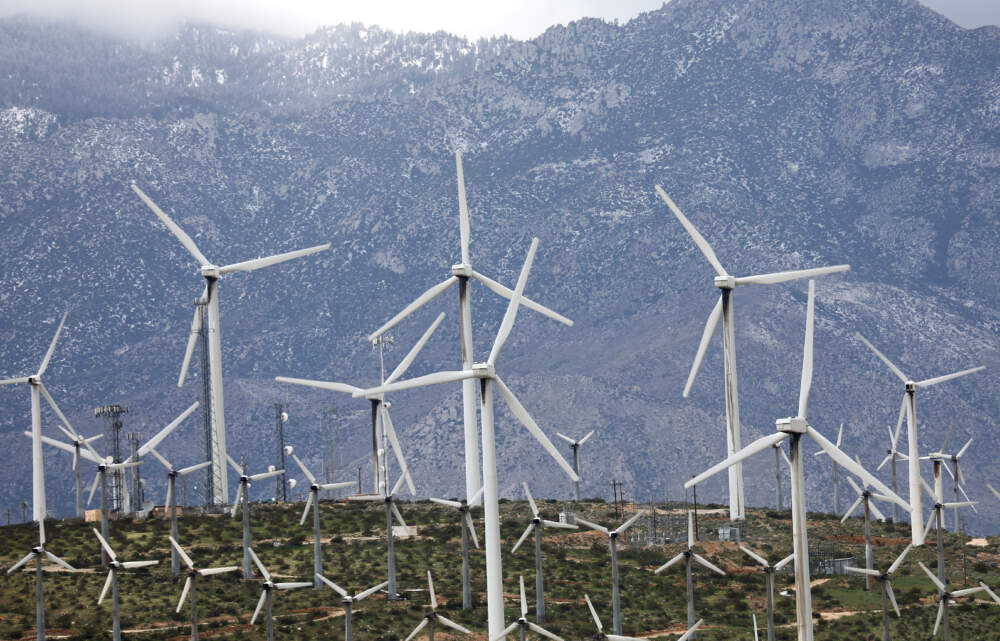Advertisement
Commentary
Don’t get stuck in a vortex of doom. There are plenty of reasons for climate optimism

When I tell people that I write a newsletter about climate optimism, I’m used to the usual responses: a scoff from folks who think we’re doomed, a rant from people fed up with politics or a quick change of subject from everyone else, because even though most Americans are worried about climate change, almost none of us talk about it.
So when CNN asked if I would appear on live television to talk about climate optimism, I was nervous — live TV is scary! — but also thrilled, because we need to ask why it is that we’re living in an era of massive climate action, yet most of us feel little hope.
Media is a large part of the equation. Last year, 40% of all climate coverage in U.S. broadcast media focused on disasters, while 6% covered the Inflation Reduction Act (IRA), America’s historic investment in climate action. Combined with the fact that bad news travels faster on social media and that our brains are hardwired to fixate on bad news, we’ve created the perfect storm for climate doom. I was eager to explain the many reasons to hope — even though, while I was talking, CNN ran images of wildfires and melting glaciers rather than the miles of wind farms in the Midwest, or aerial views of solar panels on rooftops, or the EV charging stations popping up in more places every day.
... [W]e need to ask why it is that we’re living in an era of massive climate action, yet most of us feel little hope.
I was expecting the anchor to ask pointed questions. I was expecting a mad case of jitters. But I wasn’t expecting to be so focused on walking her back from the ledge that compassion would win over nerves. “I interviewed a climate author just last week,” she said, “so I have not been actually able to sleep in the last few days.” She laughed, and I laughed, but it was the kind of laughing that covers a deep and terrible fear, locked as we are in a worldwide heatwave. It’s hard to stay hopeful when the weather feels sinister.
That might account for the staggering 2050% increase in new subscribers to my newsletter last week, compared to a normal week. I’ve been writing it for four years and have never seen more hunger for news about climate action. The subscription form asks what kind of climate stories are the most interesting, and the most common response is along the lines of, “Anything positive. Please. For the love of God.”
The first thing I wish people understood about climate optimism is that it isn't about denying what we can see with our own eyes or ignoring our grief for what we’ve lost. It’s understanding that we know how to prevent things from getting worse, and we have a plan in place to be successful. Our challenge is to “yes, and” the crap out of otherwise conflicting thoughts: We are experiencing a major crisis and we are making progress; catastrophes are upending life and our solutions are working; we are running out of time and it’s not too late.
When we see the devastating impacts of climate change unfolding around us, like the wildfires raging across Maui and the wildfires decreasing air quality across the United States, we can allow ourselves to feel these impacts deeply, then use our fear and sadness as motivation to ramp up our own efforts to help.
Advertisement
If you find yourself stuck in a vortex of doom, know this: Actions we’ve already taken have averted the most apocalyptic scenarios we feared just a few years ago. And the world has begun transitioning entire economies off fossil fuels — changing the way we generate energy, transport people and things, build buildings and grow food. These are the things thousands of the world’s leading experts say we need to do to slow climate change, and we have evidence that our efforts are working. In 2022 our carbon emissions from energy production rose under 1%, much less than originally feared, thanks to the swift adoption of renewables, electric vehicles and efficiency efforts. Green technology is advancing so quickly that it’s consistently outpacing official projections.
Optimism leads to action — and we need more people taking action because we are running out of time.
In the U.S., we’ve passed three major climate laws that together allocate $514 billion to incentivize industry and consumers to electrify everything and power it all with renewable energy. Thanks to these laws, America’s power grid is projected to generate 80-90% of its electricity from clean sources by 2030, and projects funded by these laws are breaking ground in every state.
This month, we celebrated the first anniversary of the IRA, which has already generated over $270 billion in private investments for utility-scale clean power — more than in the last five years combined. These investments put us on track to support 1 million jobs, clean our air, reduce our energy bills, advance equity and power the equivalent of every American home by 2030. We finally see that climate action is not just about the climate, it’s about making our lives better.
And that brings us back to optimism, and why it’s so important. Optimism leads to action — and we need more people taking action because we are running out of time. So what do we do? We remember what it felt like to pull off a 7th grade science fair project the night before it was due, and channel that energy into bringing clean energy into our homes and towns.
Nearly every application for IRA funding has come from “a champion who, frankly, just browbeat cities and states into doing a project,” says Jigar Shah from the Department of Energy, whose office oversees the applications. Champions are rarely elected officials. They are people like you and me.
You can take advantage of the IRA’s tax credits to buy an EV, electrify your appliances and make your home more energy-efficient. Would going electric make a difference? Even though two-thirds of CO2 emissions come from just 90 big companies, one-third of the CO2 reductions factored into the IRA come from everyday people switching to EVs and electric appliances. So that would be "yes."
No matter how full or empty your glass may be, we are in a moment that is both terrifying and exciting, because our greener future is not only underway, it’s unstoppable. We just need to pick up the pace, and the best climate news you might hear all day is that you can help make that happen.
